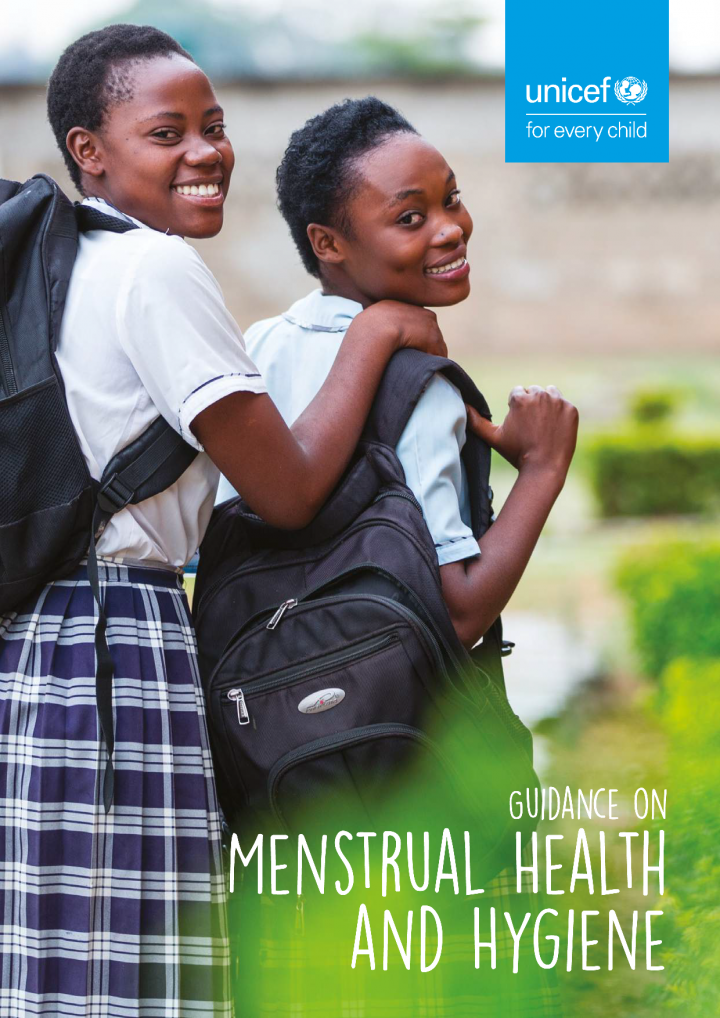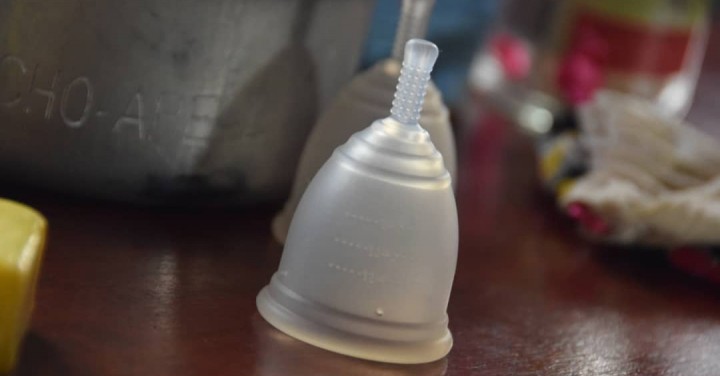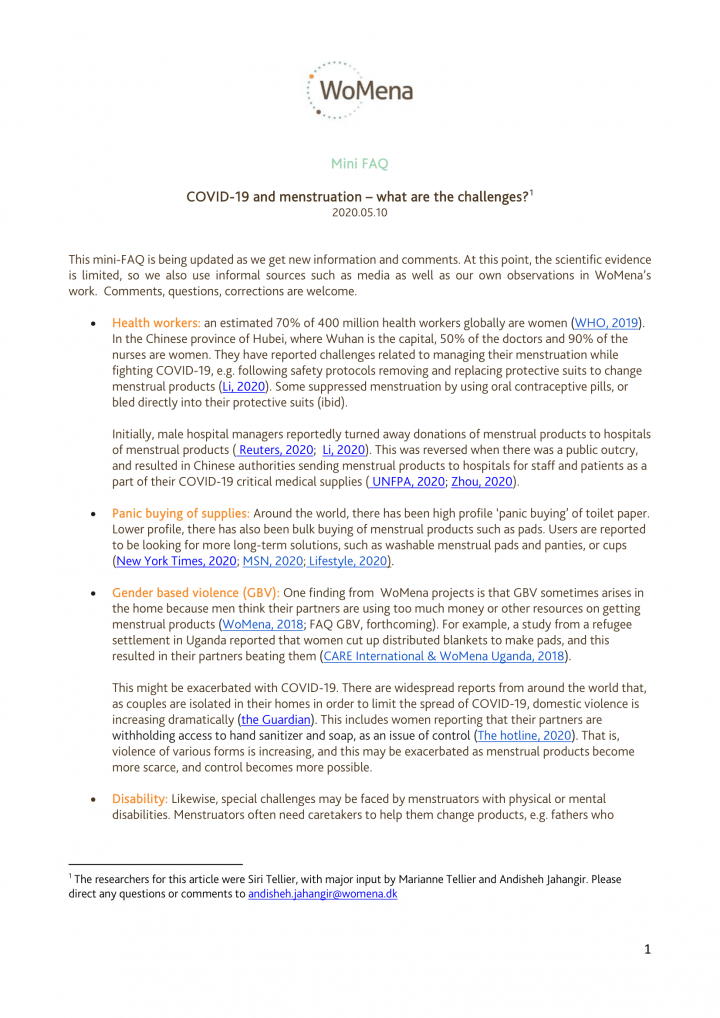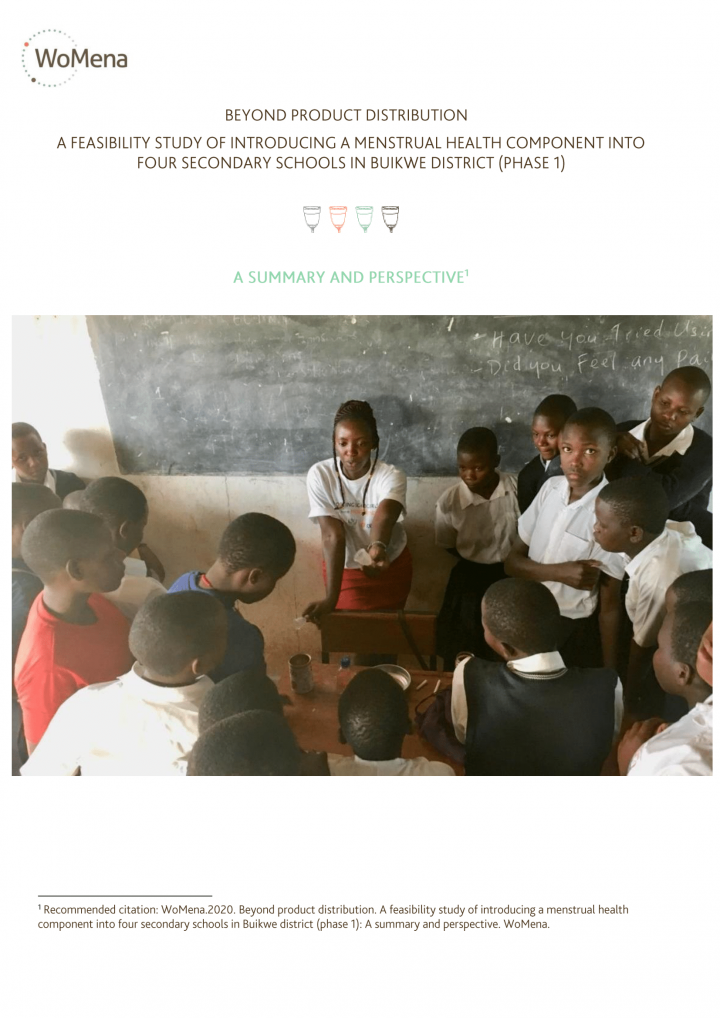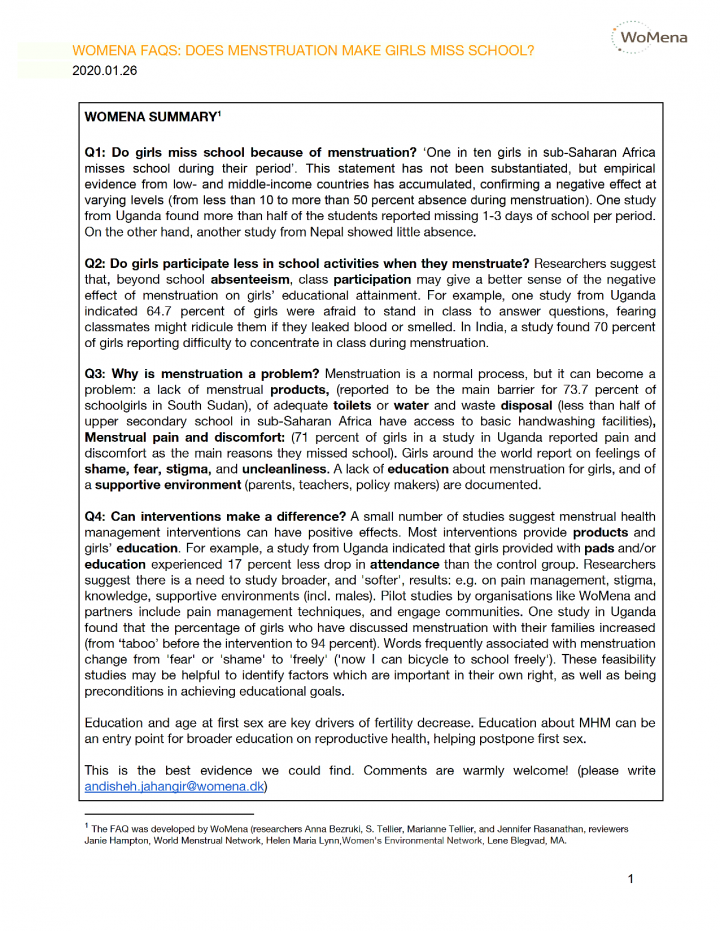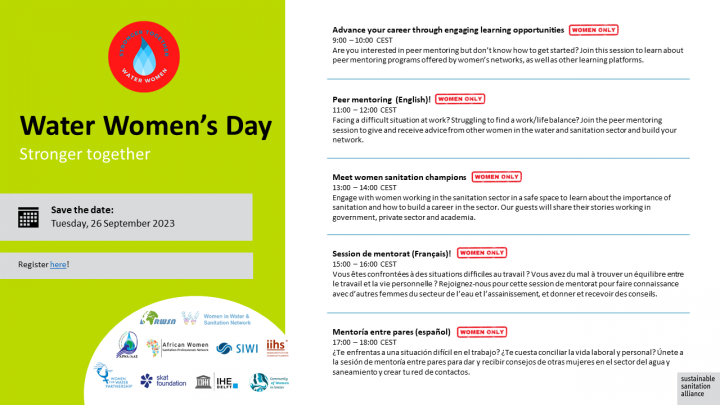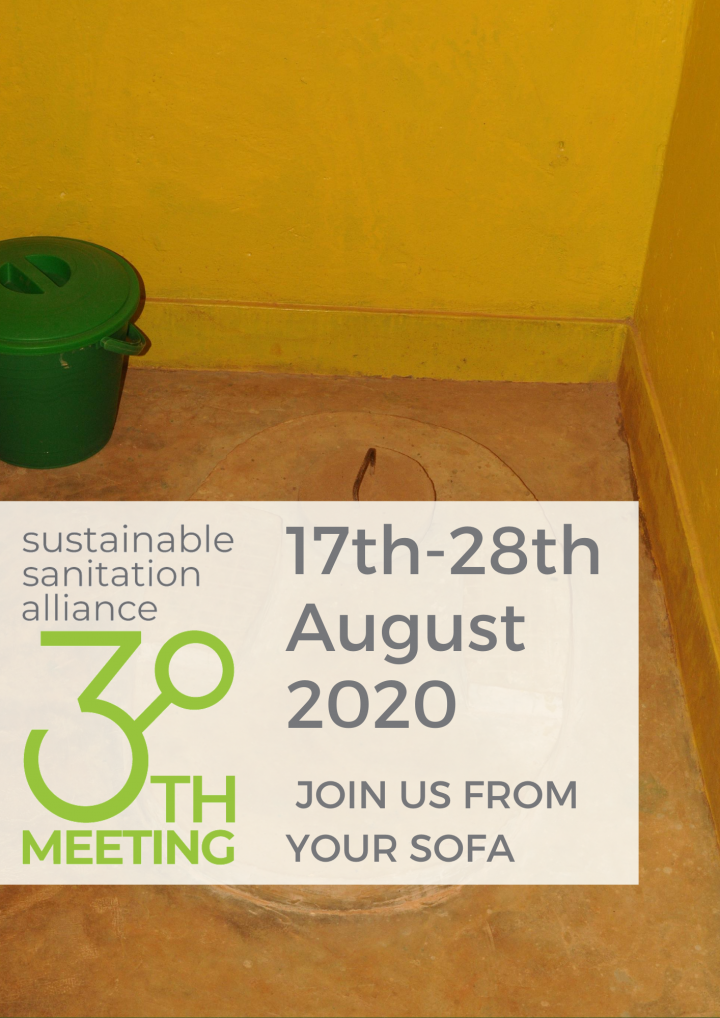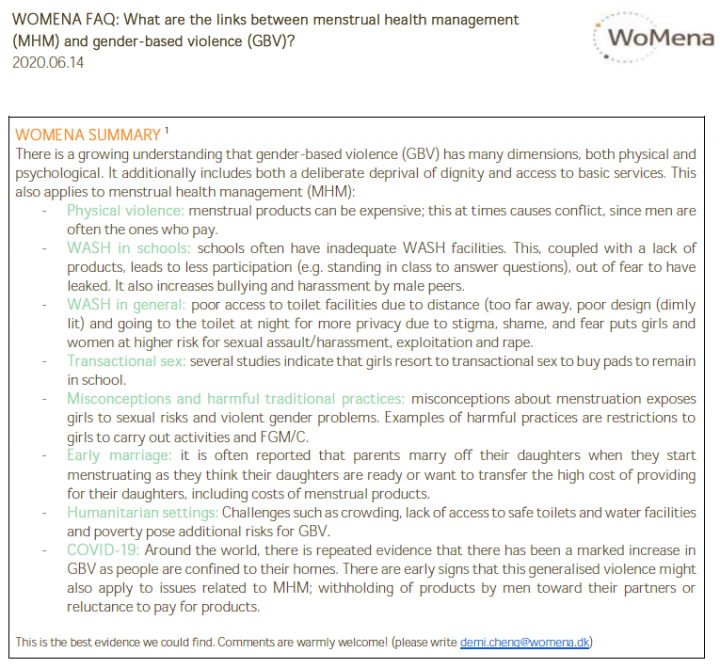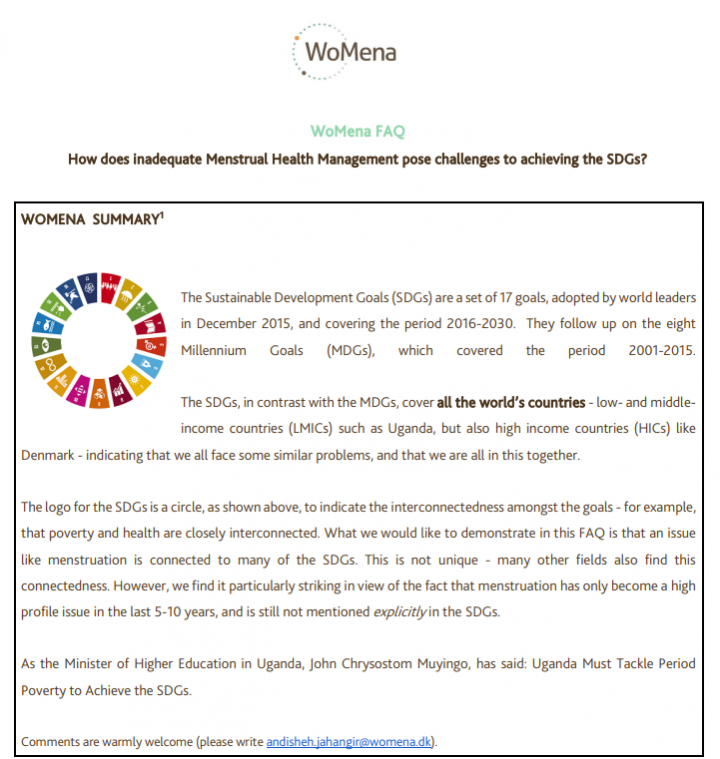Searching for information on Sanitation Workers?
The Sanitation Workers Knowledge + Learning Hub is the best source for all current news, trends, articles and updates on sanitation workers rights around the world.
The crucial role women play in managing and safeguarding water at the domestic and community level has long been recognized. Across the world, women and girls bear the brunt of collecting water—often from long distances or in harsh conditions—and usually bear responsibility for household hygiene and sanitation needs. What has been less explored is the intersection between water, gender, and …
This publication is intended to deepen the understanding of the biological nature of the menstruation phenomenon in order to reclaim and restore the pride and confidence that should naturally be a part of it. Managing menstruation hygienically with linked sanitary facilities is an important aspect of life – the practical dimensions of which this publication also aims to facilitate – resulting …
This Programming Guidance outlines essential parts of MHH programming, characteristics of good programming and examples of good practice.
It features 5 main sections:
- A global opportunity: explaining the global interest in supporting MHH
- Programm design: principles, government leadership, situation analysis, theory of change, costs
- Core package of interventions: framework of essential …
WoMena receives many questions from the women and girls we reach out to, from our trainers and our partners. Therefore, the team collect a series of questions and answers regarding topics like Menstrual Cups functionality, maintenance, health & safety, economy, and other concerns.
WoMena periodically update the questions and answers.
This mini-FAQ is being updated as we get new information and comments. At this point, the scientific evidence is limited, so we also use informal sources such as media as well as our own observations in WoMena’s work. Comments, questions, corrections are welcome.
WoMena’s contribution: WoMena works in a wide range of contexts in Uganda, including refugee settlements. In the COVID-19 …
EXECUTIVE SUMMARY
In Sub-Saharan Africa (SSA), menstrual health is often considered a taboo and many girls and women lack access to safe and appropriate menstrual health management (MHM) products. This can have far-reaching implications for women and girls’ physical, social and mental wellbeing, as well as for their sexual reproductive health and rights. These MHM issues are often further …
On the 2nd of December, SuSanA Africa Regional Chapter in collaboration with the Africa Civil Society Network on Water and Sanitation (ANEW) hosted a webinar on the topic:
Innovative and evidence-based water initiatives that advance water sector transformation and catalyze systems change for improved gender equity. Questions, such as "What is being done?" and "What more do we need to do?" will …
Many women and girls worldwide do not have the knowledge, skills, services, and products or support to ensure their well-being during menstruation. Due to the link of menstruation with health, education, water and sanitation, and socio-economic factors, these challenges are even more urgent for those who menstruate in low- and middle- income countries (LMICs). At the same time, there is evidence …
Q1: Do girls miss school because of menstruation? ‘One in ten girls in sub-Saharan Africa misses school during their period’. This truism has not been substantiated, but empirical evidence from low- and middle-income countries has accumulated, confirming a negative effect at varying levels (from less than 10 to more than 50 percent absence during menstruation). One study from Uganda found …
Phidim Municipality was declared as municipality on 18th May 2014. It is in Panchthar District, Koshi Province in the eastern Nepal. It is divided into 14 political wards. The municipality has a total population of 48,495 with 23,679 males and 24,816 females (Census 2021, n.d.). Out of total wards, ward number 1 has the largest population (8,944) while ward number 9 has the least population with …
The SuSanA Secretariat hosted the Second virtual Water Women’s Day on Tuesday, 26 September in collaboration with the Community of Women in Water, Women in Water & Sanitation Network, African Women Sanitation Professionals Network, SIWI’s Women in Water Diplomacy Network in the Nile and Central Asia & Afghanistan, African Water and Sanitation Association, Rural Water Supply Network, Women for …
Ilam Municipality is in Ilam district, Koshi province of Nepal. The municipality was established in 1958; one of the oldest municipalities in Nepal. It has 12 wards and covers the area of 173.32 sq km. It is surrounded by Maijogmai rural Municipality and Suryodaya Municipality in the east, Sandakpur Municipality and Panchthar Distict in the north, Deumai Municipality in the west, and Mai and …
Bardibas Municipality is located in Mahottari District, Madhesh Province of Nepal. It has total 14 wards and covers the area of 315.57 square kilometres. It is surrounded by Kamalamai Municipality of Sindhuli District in North, Aurahi and Bhangaha Municipalities in south, Dhanusha District in the east and Sarlahi District in the west. According to national population and housing census 2021, …
Rajpur Municipality was established in 2016. The municipality is located in Rautahat District, Madhesh Province. The municipality is divided into nine political wards. The municipality has a total population of 54,083 with 26,574 males and 27,509 females (Census 2021, n.d.). Out of total wards, ward number 1 has the largest population (7,801) while ward number 8 has the least population (4,193). …
The 30th SuSanA meeting - the first virtual of its kind - took place from August 17th to August 28th 2020. It was organised by the SuSana Secretariat with support and contributions from SuSanA Partners, Members, Working Groups and Regional Chapters.
This entry is the collection point of the different resources from the SuSanA Meeting, including recordings, presentations, flyers and program …
This briefing paper informs about a study carried out by the Container Based Sanitation Alliance (CBSA). Working with the carbon finance consultancy South Pole, five CBS operators were examined. The results show that their projects would eliminate 79% to 93% of baseline emissions, depending on the treatment methods used and contextual parameters.
The study of five CBS operators shows that …
Phungling Municipality is in the Taplejung District of Koshi Province of Nepal and is the only municipality of this district. The total area of the municipality is 125.57 square kilometres which is divided in 11 wards (Phungling, 2023).
The total population of the municipality is 28,786, with male and female population percentage of 49.2% and 50.8%, respectively. In Phungling Municipality, 7,306 …
Parsagadhi Municipality was established in 2016. The municipality is located in Parsa District, Madhesh Province. The municipality is divided into nine political wards.he municipality has a total population of 41,569 with 21,011 males and 20,558 females (Census 2021, n.d.). Out of total wards, ward number 3 has the largest population (7,221) while ward number 9 has the least number of populations …
Gaur Municipality is in Nepal’s southern Terai area. The municipality was formed in April 1992 by merging Gaur, Tikuliya, Purenywa, Sirshiya and Swagadha Village Development Committees (VDCs). The municipality is divided into nine political ward boundaries. According to the census 2021, the municipality has a total population of 39,846 and there are 7,235 households with an annual growth rate …
Finally, Africa‘s Voice on Water (AVOW) magazine is here. AVOW is an initiative brought to you by the African Ministers‘ Council on Water (AMCOW) as a platform to amplify the collective voice of Africa‘ s water and sanitation sector. Join for a journey through the triumphs, challenges, and innovations that shape Africa‘s water and sanitation landscape.
AMCOW wants to demonstrate its …
Approximately 25% of the world population are females aged 15 - 49. Ensuring that women and young girls are able to address and manage their menstruation in a safe and hygienic manner is of utmost importance for public health and safe hygiene. However, the prevailing lack of awareness, persistent tabooization of the topic, socio-cultural beliefs and traditional hygiene practices, as well as …
Menstruation is a natural, normal biological process experienced by all adolescent girls and women, yet it is not spoken about openly causing unnecessary embarrassment and shame. India’s 113 million adolescent girls are particularly vulnerable at the onset of menarche. At this time they need a safe environment that offers protection and guidance to ensure their basic health, well-being and …
Menstrual poverty, also called period poverty, is understood as the range of interconnected deprivation menstruators face. But which factors play a role and what can the WASH sector do to tackle menstrual poverty? Examples from a Yazidi IDP camp in the Kurdistan Region of Iraq illustrate why the time for action is now.
WoMena SUMMARY [1]
There is a growing understanding that gender-based violence (GBV) has many dimensions, both physical and psychological. It additionally includes both a deliberate deprival of dignity and access to basic services. This also applies to menstrual health management (MHM):
Physical violence: menstrual products can be expensive; this at times causes conflict since men are often …
Menstruation is connected to many of the Sustainable Development Goals (SDGs). This is not unique – many other fields also find this connectedness. However, we find it particularly striking in view of the fact that menstruation has only become a high profile issue in the last 5-10 years, and is still not mentioned explicitly in the SDGs.



